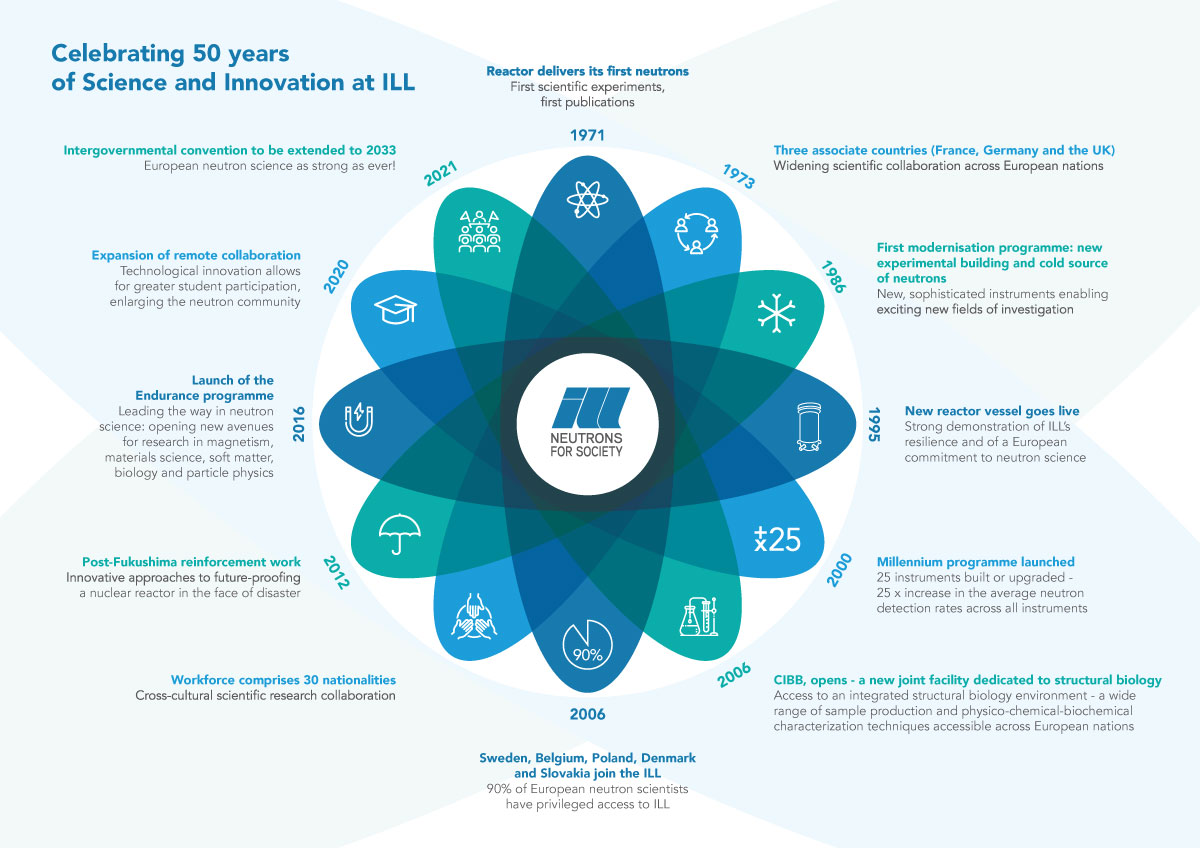A bit of history
The ILL was founded on 19 January 1967 with the signing of an agreement between the governments of the French Republic and the Federal Republic of Germany. The friendship and influence of Louis Néel and Heinz Maier-Leibnitz brought this project to fruition in Grenoble.
The ILL had the innovative status of a service institute, offering the scientific community the world's leading facilities in neutron science and technology - a large cold neutron source and ten neutron guides, each capable of serving three or four instruments with a very high intensity neutron flux...
In January 1973 the United Kingdom decided to join ILL and officially became the institute’s third Associate member country in 1974.
Twelve other countries have signed "Scientific Membership" agreements with ILL: Spain (1987- ), Switzerland (1988- ), Austria (1990- ), Italy (1997- ), the Czech Republic (1999- ), Sweden (2005- ), Hungary (2005-2013), Belgium and Poland (2006- ), Denmark and Slovakia (2009- ), India (2011-2014) and Slovenia (2020- ).
The Institute is an exceptional centre of excellence, a fine example of successful co-operation in Europe and a prototype for the European Research Area.
Key dates
1967: The ILL is founded on January 19th by France and Germany
1968: Landscaping
1969: Start of work on the reactor floor and walls
1970: Installation of the Level D crane
1971: Construction complete
The reactor went critical on August 31, ramping to full power on December 16-21
1972: First experiments. Ipoustéguy's sculpture is installed
1973: The UK becomes an Associate on January 1st
1976: The European Molecular Biology Laboratory outstation is established on the site
1979: The 'Deuxième souffle' modernisation programme
1981: The Intergovernmental Agreement is extended to December 1992
1984: Decision to build the ESRF in Grenoble, on the ILL / EMBL research site
1985: Improved version of the vertical cold source
1987: New horizontal cold source
1991-1995: Replacement of the reactor vessel
1994: ESRF starts operations; its first experiments
1995: Restart of the "new" reactor
2000: Launch of the "Millennium Programme" for the modernisation of instruments
2002: ILL is a founding member of EIROFORUM
2002-2007: Refit programme, with improvements to security and seismic reinforcements
2003: The new hot source is installed
2006: Inauguration of the Carl-Ivar Brändén Building, host to the Partnership for Structural Biology, the UVHCI, and the Deuteration lab
2006: H1/H2 guide renewal
2010: Transfer from the CEA to the ILL of environmental monitoring responsibilities
2010: Launch of the EPN science campus
2013: The Intergovernmental Agreement is extended to 2023
2016: The Endurance Programme is launched
2017: ILL's 50th anniversary

 (pdf - 690 Ki)
(pdf - 690 Ki)